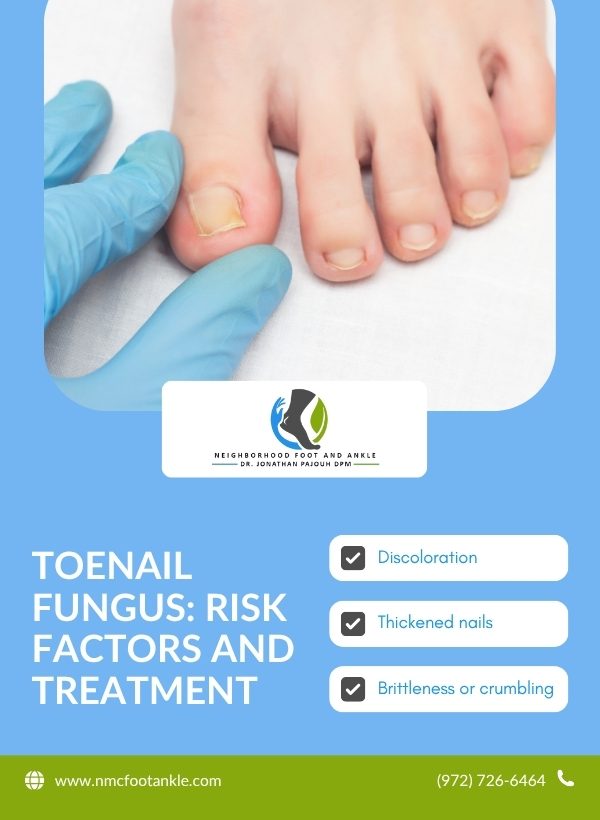Did you know that nearly 10% of the population suffers from toenail fungus? This common ailment not only impacts the appearance of your feet, but it can also lead to more severe health issues if left untreated. Understanding the symptoms, causes, and treatment options for fungal nail infections is crucial to maintaining foot health. In this post, we’ll explore the world of onychomycosis, including risk factors, diagnosis, and effective treatment strategies that can get your nails back to looking and feeling their best.
Understanding Fungal Nail Infections
Fungal nail infections, or onychomycosis, can be a significant issue for many individuals, causing thick, yellow, or discolored toenails that can be unsightly and uncomfortable. This infection can occur in one or multiple nails, and it is more common in toenails than fingernails due to footwear and environmental conditions. Recognizing the symptoms and understanding the underlying causes will empower you to take action before the condition worsens.
Symptoms of Fungal Nail Infections
The symptoms associated with fungal nail infections can vary from person to person, but common signs include:
1. Discoloration: One of the first noticeable signs is a change in color. The nail may turn yellow, brown, or even white.
2. Thickened Nails: As the infection progresses, nails may become thick, making them more difficult to trim and maintain.
3. Brittleness or Crumbling: Affected nails often lose their strength, becoming brittle and prone to crumbling or breaking.
4. Distorted Shape: Fungal infection can alter the shape of the nail, leading to a sombrero-like contour.
5. Separation: The nail may begin to separate from the nail bed, creating pain and discomfort.
Understanding these symptoms can lead to early detection, which is crucial for effective and timely treatment.
Risk Factors for Fungal Nail Infections
While anyone can develop a fungal nail infection, certain factors can increase the likelihood:
- Sweaty Shoes: Wearing shoes that do not allow for proper ventilation can create a warm, moist environment conducive to fungal growth.
- Public Showers or Pools: Fungal spores thrive in communal areas, making it easy to develop conditions in high moisture environments.
- Humid Climates: Living in areas with high humidity can promote fungal infections as the environment encourages spore proliferation.
- Diabetes: Individuals with diabetes are more susceptible due to poor circulation and weakened immune responses.
- Weakened Immunity: Those with compromised immune systems are at greater risk for developing infections, including onychomycosis.
By recognizing these risk factors, individuals can take proactive steps toward prevention, such as opt for breathable footwear and maintaining good foot hygiene.
Diagnosing Toenail Fungus
Accurate diagnosis is essential to determine the appropriate treatment method. A diagnosis usually involves several steps:
1. Physical Examination: A doctor will closely examine the nails and surrounding areas for typical signs of infection.
2. Nail Clipping: A sample of the infected nail may be clipped and examined under a microscope or sent to a laboratory for culture analysis.
3. Laboratory Tests: This may involve testing for the presence of fungal organisms to confirm the diagnosis before proceeding with treatment.
It’s critical to visit a healthcare professional, such as Dr. Pajouh, if you suspect a fungal infection, as misdiagnosis can lead to ineffective treatments or worsened conditions.
Treatment Options for Fungal Nail Infections
The treatment course for fungal nails can vary widely depending on the severity and extent of the infection. Here are some commonly recommended treatment options:
1. Topical Treatments
Topical antifungal solutions are often the first line of defense. These are applied directly to the affected nail and may take several months to see improvement. Regular use according to medical advice, and persistence is key to success.
2. Oral Antifungal Medication
In more severe cases, a healthcare provider may prescribe oral antifungal medication. These medications are typically taken for several weeks or months and work by targeting the fungal infection from within.
3. Laser Therapy
For those looking for a quick, effective option, laser therapy is one of the latest advancements in nail fungus treatment. This non-invasive procedure destroys the fungus without damaging the surrounding tissue. Though it may come with a higher price tag, many find it to be a viable solution.
4. Surgical Intervention
For extreme cases, surgical removal of the nail may be necessary, particularly if the infection cannot be controlled through other means. This is usually a last resort but can lead to definitive resolution of the infection.
Home Remedies for Prevention and Care
Preventing toenail fungus is preferable to treatment after the fact. Consider these practices to minimize your risk:
- Keep Your Feet Dry: Regularly dry your feet and avoid damp conditions, especially between the toes.
- Choose Breathable Footwear: Wearing shoes that promote air circulation helps reduce moisture buildup and fungal growth.
- Avoid Walking Barefoot in Public Places: Always wear flip-flops or protective footwear in places like pools, gyms, and communal showers.
- Maintain Nail Hygiene: Regularly trim and clean your nails, avoiding damage to the nail bed.
- Consider Antifungal Powders: If you often deal with sweaty feet, over-the-counter antifungal powders can help keep the area dry and fungus-free.
Where Do We Go From Here?
Fungal nail infections may be common, but that doesn’t mean you have to live with them. By taking proactive measures—such as maintaining good hygiene and seeking timely medical advice—you can reclaim your foot health. Don't let insecurity about your nails hold you back from wearing your favorite shoes and showing off your feet! Whether you're already dealing with fungus or want to avoid it, being informed is your best defense. Remember, healthy feet are a vital part of your overall well-being! Come see Dr. Pajouh at NMC Foot & Ankle Center and he can help you get back on track.
Schedule Your Appointment:
Contact Us – Reconstructive Podiatric Foot & Ankle Surgeon, Dallas TX

